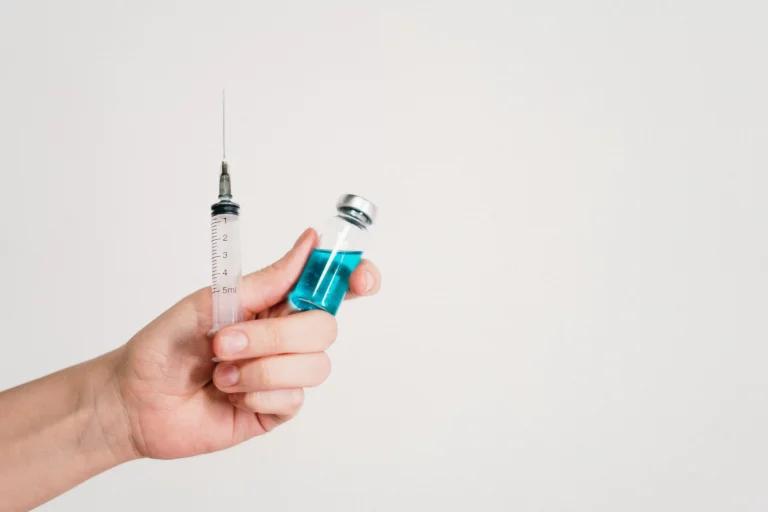In recent years, the landscape for obesity treatment has been rapidly evolving and two medications retatrutide and tirzepatide have gained considerable attention for their weight loss results. While both drugs leverage the body’s natural hormone-based regulation of energy homeostasis, it is crucial to distinguish these two therapies.
📝 Understanding tirzepatide
Tirzepatide, known by the brand names Mounjaro and Zepbound, is a groundbreaking medication for the management of type 2 diabetes and weight loss. As a dual glucose-dependent insulinotropic polypeptide (GIP) and glucagon-like peptide-1 (GLP-1) receptor agonist, it offers a novel approach to treatment:
Mechanism of action
Tirzepatide effectively stimulates insulin release from the pancreas, which helps to reduce hyperglycemia. It also increases adiponectin levels, which can play a role in decreasing insulin resistance. The drug’s dual action as a GIP and GLP-1 receptor agonist aids in decreasing appetite and slowing food movement from the stomach, which can lead to weight loss.
Dosage and administration
Available in various dosage forms, including subcutaneous solutions and injections, tirzepatide offers flexibility with strengths ranging from 2.5 mg to 15 mg. The recommended maintenance dosages are 5 mg, 10 mg, or 15 mg once weekly, which caters for individual patient needs.
Efficacy and safety
Beyond its primary use for type 2 diabetes, tirzepatide has been explored for its potential in treating obesity, osteoarthritis of the knee, atherosclerosis, and other metabolic diseases. The SURPASS clinical trials have highlighted its significant A1C lowering and weight loss benefits, marking it as a promising option for patients with diabetes and obesity.
It is important to note that tirzepatide comes with a boxed warning for the risk of thyroid C-cell tumors, and may delay gastric emptying, which could affect the oral absorption of other medications. As a prescription-only medication, healthcare providers need to consider each patient’s unique circumstances when prescribing tirzepatide for diabetes or weight management.
📝 Introducing retatrutide
Retatrutide is a new medication that targets the glucose-dependent insulinotropic polypeptide (GIP receptor), glucagon-like peptide-1 (GLP-1), and glucagon receptors (GCG receptors). This unique mechanism of action sets retatrutide apart from traditional weight loss drugs such as semaglutide (Wegovy) as it aims to target all three of these key hormones involved in glucose (blood sugar levels) and satiety regulation.
Mechanism of action
Retatrutide activates the GIP, GLP-1, and GCG receptors simultaneously, which may lead to better weight loss and cardiometabolic benefits compared to targeting a single receptor. GIP is involved in glucose and lipid metabolism, GLP-1 regulates insulin secretion and appetite, and GCG plays a role in energy expenditure and substrate utilisation.
Dosing and administration
Retatrutide is administered subcutaneously once weekly, with dosing regimens ranging from 1 mg to 12 mg. For higher doses (4 mg and above), the medication is typically started at a lower dose (2 mg or 4 mg) and gradually built up to reduce the potential for gastrointestinal side effects.
Efficacy and safety
In clinical trials, patients taking retatrutide have shown an average weight loss reduction of up to 24% from baseline body weight. The medication has also been associated with improvements in various cardiometabolic parameters, including blood pressure, glycemic control, and lipid profiles. While retatrutide shares some common side effects with GLP-1 receptor agonists, such as gastrointestinal events, the frequency and severity of these adverse events appear to be dose-dependent and can be reduced by the use of a lower starting doses of retatrutide.
🗝️ Key differences between tirzepatide and retatrutide
Retatrutide vs Tirzepatide
The primary distinction between retatrutide and tirzepatide lies in their mechanism of action. Tirzepatide is a dual agonist, targeting the glucose-dependent insulinotropic polypeptide (GIP) and glucagon-like peptide-1 (GLP-1) receptors, while retatrutide is a triple agonist, targeting GIP, GLP-1, and GCG simultaneously. This difference in receptor activation may contribute to the variations in weight loss and cardiometabolic outcomes between the two medications.
Magnitude of weight loss
Phase 2 clinical trial results published in The New England journal of medicine suggest retatrutide may prompt even greater weight loss than other weight-loss medications, including Zepbound. The weight-loss results at 48-weeks found with the 12 mg retatrutide group an average weight reduction of 24.2% was achieved, while the placebo group only saw a 2.1% change. In contrast, Clinical trials have shown that on average, patients lost up to 22.5% of their original weight on the highest dose of Mounjaro (15mg) after 72 weeks.
Cardiometabolic benefits
Both tirzepatide and retatrutide have demonstrated improvements in various cardiometabolic risk factors, such as blood pressure, lipid profiles, and glycemic control. However, the triple-hormone receptor agonism of retatrutide may bring additional benefits, potentially leading to more improvements in these parameters.
Safety and tolerability
While both medications share common side effects, such as gastrointestinal issues, and constipation. The frequency and severity of these events may differ. Retatrutide has shown a dose-dependent profile, with higher doses associated with a higher incidence of gastrointestinal events. The use of a lower starting dose for retatrutide can be a way to reduce these side effects.
It’s important to consult with a healthcare professional for guidance on how to manage any discomfort and to understand what to expect when starting the medication.
FDA approval
The U.S. Food and Drug Administration approved tirzepatide weekly injections for chronic weight management in adults who are overweight or have obesity, with at least one weight-related condition (such as high blood pressure, type 2 diabetes or high cholesterol), in addition to a reduced calorie diet and increased physical activity in November 2023.
Retatrutide is a weight loss drug that has not yet received approval from the U.S. Food and Drug Administration (FDA) for the treatment of obesity. The compound is currently in the development pipeline, with Eli Lilly, the pharmaceutical company behind its creation, actively pursuing the next stages of the regulatory process. 2026 will be the earliest possible date doctors can prescribe retatrutide, assuming that the drug passes later-stage human trials now underway.
Personalised approach to weight management
As with any medical intervention, the response to weight loss medications can vary among individuals. Understanding the factors that influence an individual’s response, such as baseline BMI, sex, and comorbidities, will be crucial in guiding the selection of the most appropriate treatment approach.
Research and future developments
The promising results from the phase 2 trial of retatrutide have paved the way for further investigation in larger, phase 3 clinical trials. These studies will provide valuable insights into the long-term efficacy, safety, and tolerability of this triple-hormone receptor agonist, as well as its potential impact on cardiovascular outcomes.
📝 Conclusion
As the obesity epidemic continues to be a significant global health challenge, new weight loss drugs like retatrutide represent a significant advancement in the field of obesity management. While tirzepatide and retatrutide share the common goal of weight loss and improving metabolic health, the unique triple-hormone receptor agonism of retatrutide sets it apart, offering the potential for more significant weight loss and sustained weight reduction.
Sources
- Unleashing the power of retatrutide: A possible triumph over obesity and overweight: A correspondence – PMC
- Triple–Hormone-Receptor Agonist Retatrutide for Obesity — A Phase 2 Trial – New England Journal of Medicine
- Type 2 Diabetes Treatment to Lower A1C – Mounjaro® (tirzepatide) (lilly.com)
- Zepbound (tirzepatide) Injection for Adults with Obesity or Excess Weight (lilly.com)
Medical Disclaimer
NowPatient has taken all reasonable steps to ensure that all material is factually accurate, complete, and current. However, the knowledge and experience of a qualified healthcare professional should always be sought after instead of using the information on this page. Before taking any drug, you should always speak to your doctor or another qualified healthcare provider.
The information provided here about medications is subject to change and is not meant to include all uses, precautions, warnings, directions, drug interactions, allergic reactions, or negative effects. The absence of warnings or other information for a particular medication does not imply that the medication or medication combination is appropriate for all patients or for all possible purposes.









